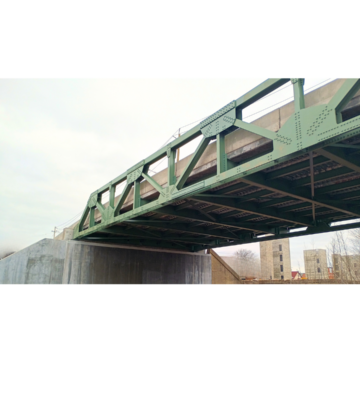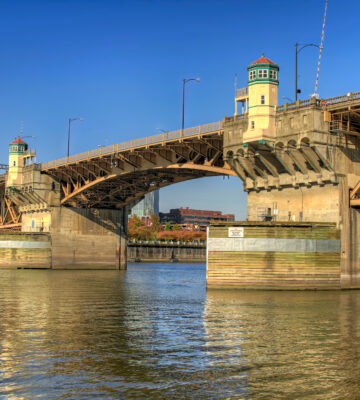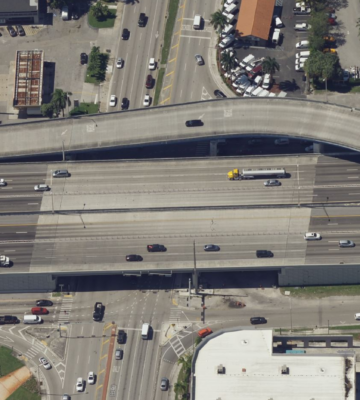The $300 million I-95/Route 1 Interchange Project in Alexandria, Virginia, includes the H&H designs for the Route 1 Bridge and for two HOV ramp structures connecting to the Route 1 Bridge. The new Route 1 Bridge is a 1,671-ft-long curved structure with varying width from 140 ft to 230 ft. It is a heavily skewed structure with ten lanes crossing over open water, environmental wetlands, and Washington DC’s sixteen-lane Beltway. The new design includes various superstructure types, including reinforced concrete slab spans, prestressed concrete Bulb-T beams, curved rolled steel beams, and curved steel plate girders. The bridge carried many utility lines including water, drainage, telephone, lighting, and standpipe. In late 2001, H&H submitted Stage 1 preliminary drawings for the bridge and the two ramp structures. H&H submitted final design plans in 2003.
As part of the Bridge Concept Report, H&H studied substructure and superstructure concepts in the initial phases of the bridge design. H&H also studied the construction, staging, and maintenance of traffic schemes that were incorporated into the interchange at the conceptual level. Architectural pier concepts comprised of reinforced concrete multi-column piers with architectural treatment on square columns along I-95 traffic and also circular, reinforced concrete columns over open water and pile bents over wetlands.
Approximately 800ft of the Route 1 Bridge spans tidal wetlands, and the foundation alternatives were determined after much consideration of the variable water table to be encountered during footing construction. To minimize the number of substructure units within the wetlands region, H&H developed specific span arrangements. The firm investigated costs associated with the installation of cofferdams, prefabricated footing boxes, and drilled shafts with permanent casings.
Due to the complexities of this project, the required multi-staged construction included the retrofitting and widening of the existing Route 1 Bridge; construction of temporary roadways and ramps; relocation of major utilities; and partial demolition and temporary reuse of existing piers. Additional staged construction is required for the new Route 1 Bridge to maintain normal traffic. H&H developed staging concepts to mitigate the impacts on wetlands by minimizing the use of causeways and haul roads and by promoting the construction and demolition of existing structures.




